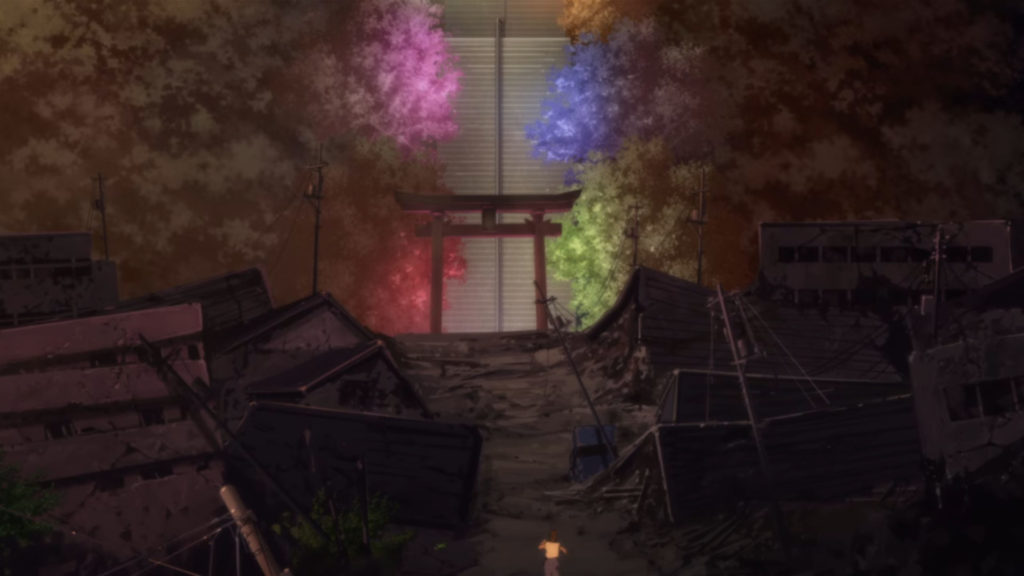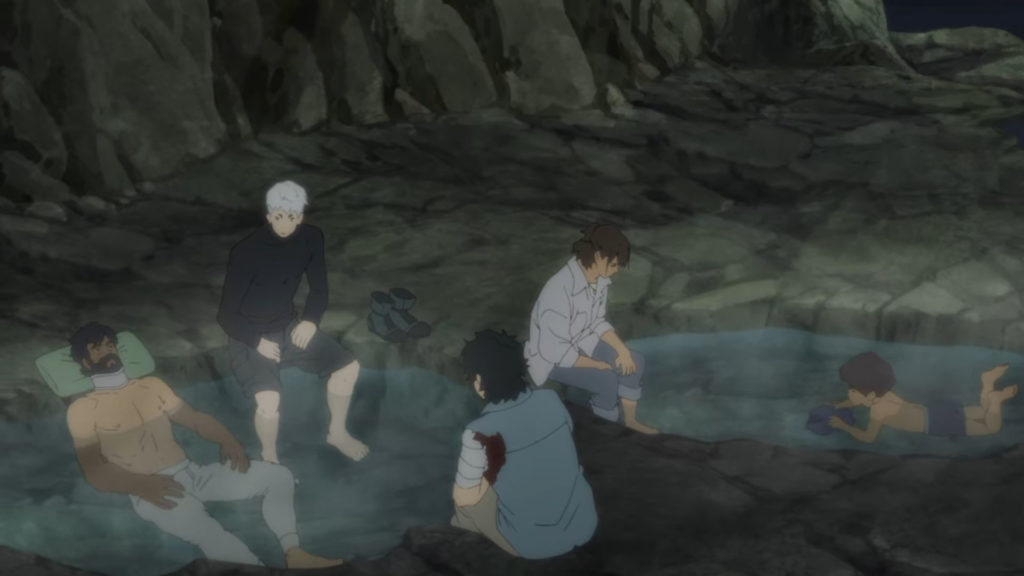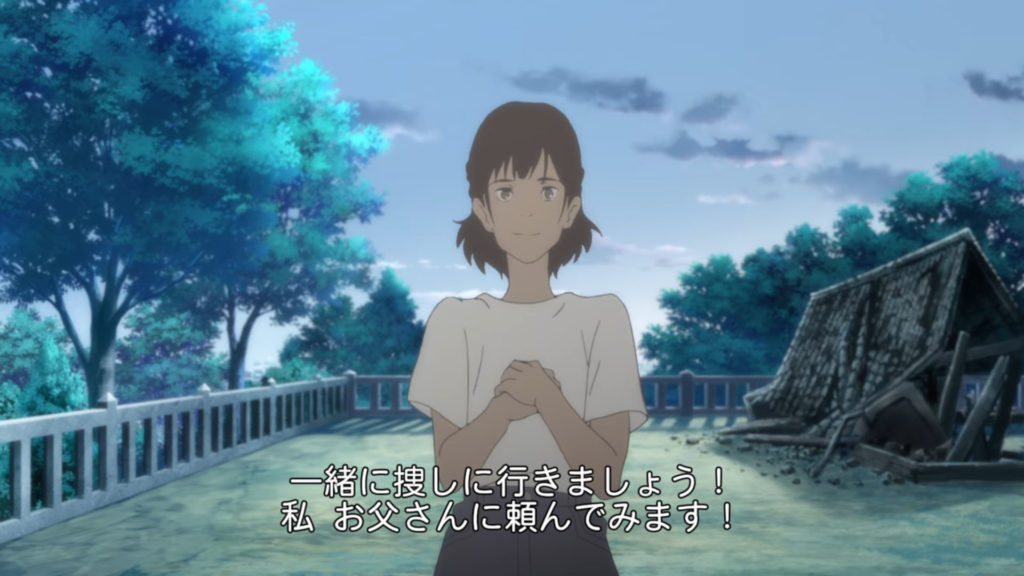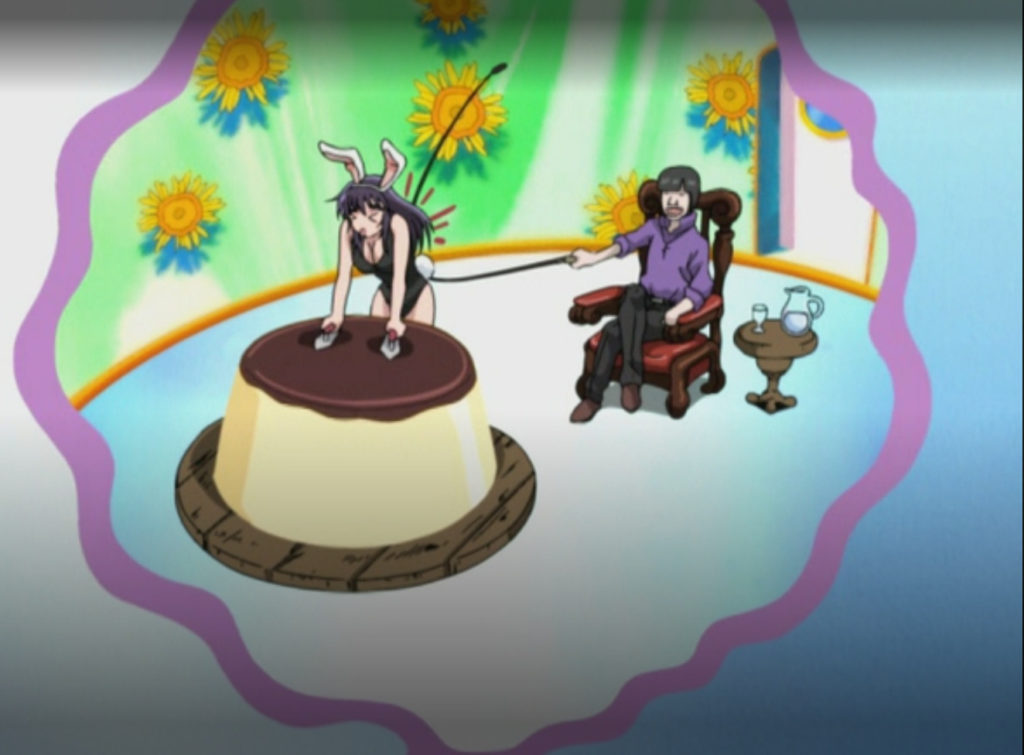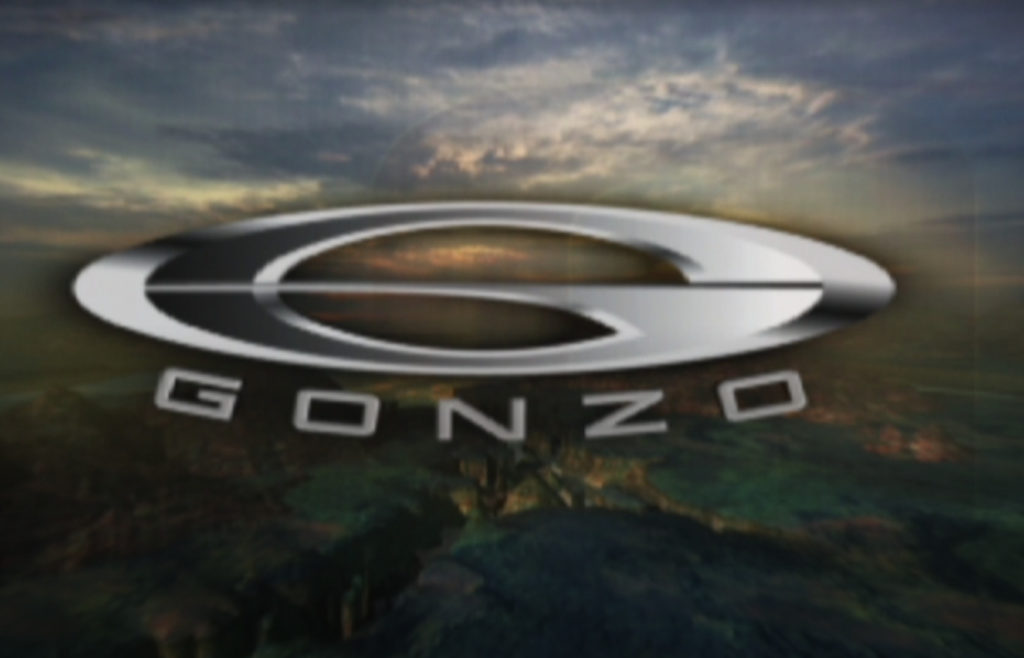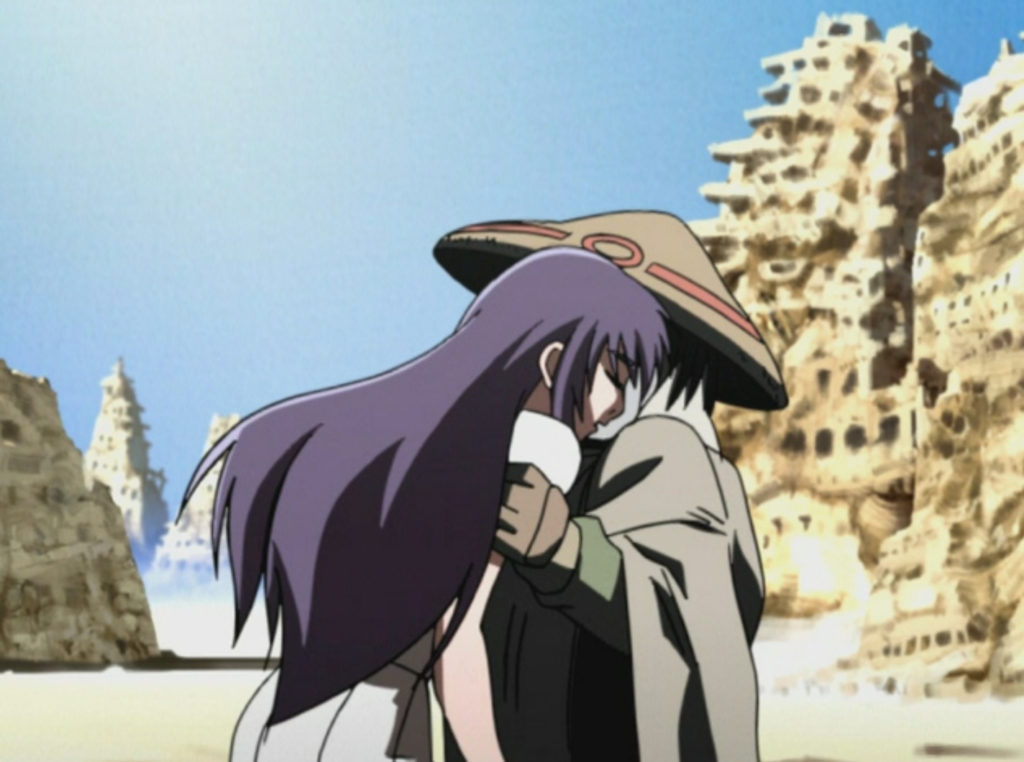Or, How I Learned to Just Embrace the Corn
by Bolt Vanderhuge
In spite of being something akin to an old classic, I feel like Fist of the North Star tends to get forgotten by modern audiences, or just mocked by them if they are made aware of it. Yet if one can overlook the poor animation quality, visual inconsistencies, and simplistic plot, it really is a strangely watchable show.
First, though, you should be aware of the fact that you have essentially two options, as I’m highlighting both a movie released in 1986 and a series which aired from 1984-1987, which were both produced by the same creative staff. The series was pretty obviously made for a younger crowd, and is toned down accordingly, often through the use of silhouette or recoloring blood to either black or white for the gorier scenes, while the movie revels in goriness, being sure to show you as much of the insides of the victims of the various styles of martial arts (referred to as fists) used by protagonist Kenshiro and a few other characters he comes across on his journey to rescue his fiancé. Ironically, there’s a lot more random nudity in the series than there is in the movie.
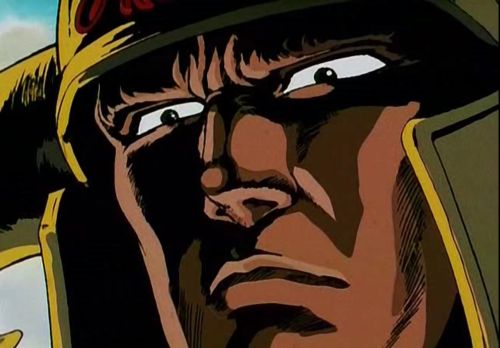
In any case, this is a post-apocalyptic story, set in the ruins of a nuclear holocaust that has claimed most of humanity and left the entire planet a ruin. The movie leave the nature of this apocalypse something of a mystery, but the series explicitly spells it out and even shows it a few times in flashback. While most of what remains of humanity has fallen into anarchy and lives off what they can salvage from the remains of civilization (and is very much inspired by Mad Max), there are still martial art masters keeping their traditions alive. Most of them, such as the titular “Fist of the North Star,” are seen as so powerful that there can be only one legitimate practitioner of them at a time. Kenshiro is but one of three adopted sons of the master of the Fist of the North Star, and undergoes trials with them so the master can decide which to choose as heir to his Fist. He ends up going with Kenshiro, and this ends up making the others rather upset. One of them just takes what he has learned so far and kills the master before leaving on a quest to take over the world so he can bring order to the chaos. As it happens, Kenshiro was set to marry a woman named Yuria, and is best friends with the man who has learned the Fist of the Southern Cross, Shin, at this time, and his other jealous brother decides to screw him over by convincing Shin that Yuria would be better off with him. So the first part of both the movie and the series consists of Shin betraying Kenshiro and almost killing him in order to get him to give Yuria up, giving him the signature Big Dipper scar on his chest in the process, with Kenshiro seeking to rescue Yuria and take revenge on Shin after he has recovered. This then ultimately culminates in a conflict with his oldest adoptive brother, Ken-Oh/Roah, and him never quite getting Yuria back.
No matter which version of this story you decide to watch, you are going to be bombarded by cheesy ’80s action goodness combined with all the anime clichés you can think of. The series does tell a much more coherent story than the movie, and actually adds more than one dimension to the main antagonists, but it does really draw the story out and take its time to get to the point, but it makes up for this by being strangely watchable, with just enough interesting points to keep one watching. The movie is basically just a massive dose of the good ol’ ultra-violent – the product of a style that has become a thing of the past, much to my disappointment. The downside to both versions is that it involves a couple of kids joining up with Kenshiro, essentially to become audience proxies so that things can be explained to them. But as with most child characters, they tend to be rather annoying and get used to generate melodrama thanks to their stupidity. One of them, Lynn, is like a moéblob even though that trope had yet to be a thing, and is so clingy she would give Overly Attached Girlfriend a run for her money.
Strictly speaking, I would not call this a “good” show per se, as Kenshiro really epitomizes the Gary Stu trope, and the story is quite simplistic, but it is still a lot of fun to watch Kenshiro’s arms blur as he pushes his enemies’ secret pressure points to make them all explode, and even does crazy things like beat up a WWII Panzer tank, so I’d still recommend it to fans of the ’80s action genre.
Fuck Yeah! Look It Up:
Fist of the North Star [Hokuto no Ken] 109 episode anime (1984), and film (1987)
Based on the manga by Buronson and Tetsuo Hara
Produced by Toei, Licenced by Discotek

